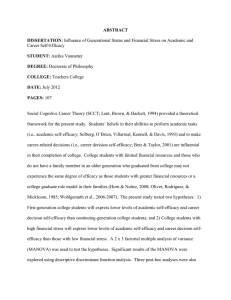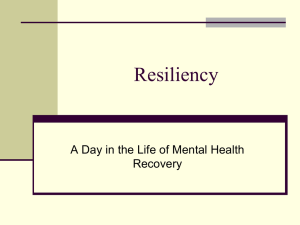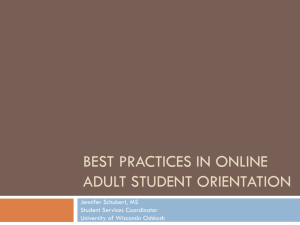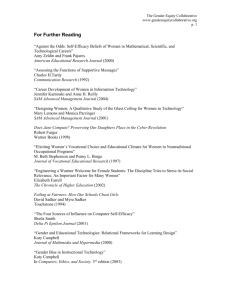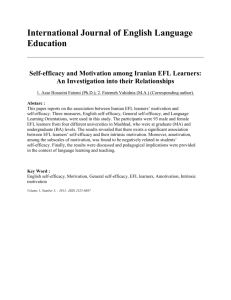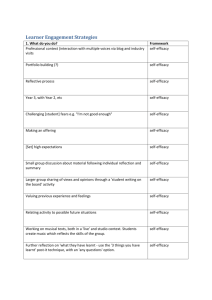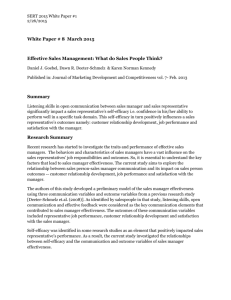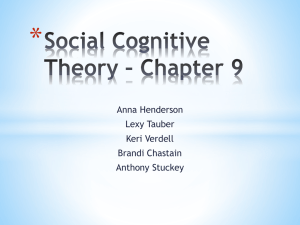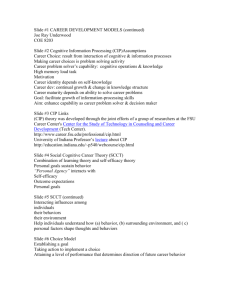Creating a Culture of Self
advertisement
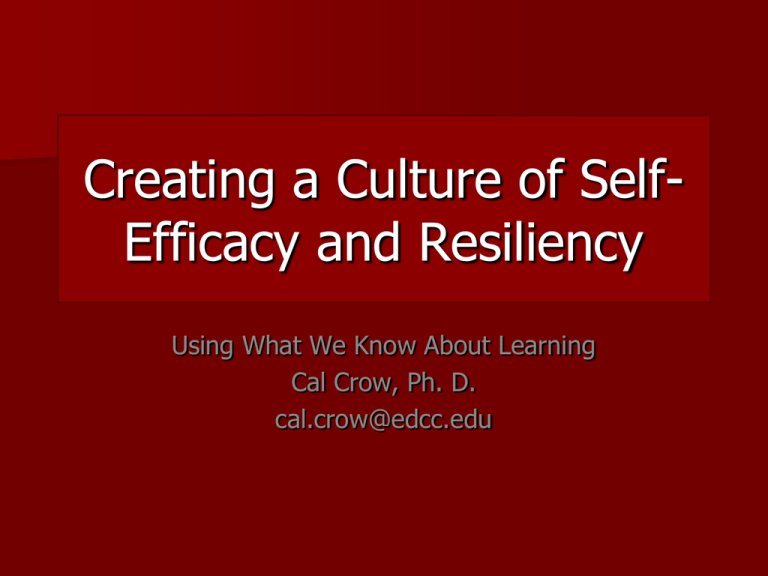
Creating a Culture of SelfEfficacy and Resiliency Using What We Know About Learning Cal Crow, Ph. D. cal.crow@edcc.edu Self-Efficacy, a student’s belief in her/his capability to perform a task or manage a situation, is often called the major predictor of success in school and work. Closely related to self-efficacy is resiliency, a student’s ability to overcome obstacles and rebound from setbacks. Although it is part of our nature, many individuals lose it along the way. Numerous studies have indicated that increasing a student’s self-efficacy and resiliency (an internal transformation) will create more positive results than trying to induce behavior change from the outside, e.g., through information, rules, remediation, and threats (external transactions). Recent studies questioning the effectiveness of community college “remedial education” are a case in point. Self-efficacy increases when students-are given “mastery experiences,” i.e., things they learn to do that they once thought beyond them. learn of others, similar to themselves, who have become successful. work with credible people they trust who sincerely believe in and encourage them. can visualize a desirable, successful future. Self-efficacy decreases when a student acquires a feeling of failure. Resiliency increases when students-encounter caring adults who support them and have their best interests at heart. have high expectations for themselves because others have high expectations for them. are given a voice and an opportunity to contribute in some way. Educator self-efficacy significantly influences (some say predicts) student self-efficacy. If we believe we are capable of helping all students perform successfully, we will find a way to make this occur. And when this occurs, student self-efficacy will increase. Curriculum delivery and relationships with students are extremely important here. When students experience success, self-efficacy and motivation increase. When students experience failure, self-efficacy and motivation decrease. In order to increase student success and retention rates, we will want to shift the focus from what we do (transactions) to how students experience what we do (transformations). In other words, the question is not, “What are we doing?” but “What difference are we making?” Self-efficacious, resilient individuals rarely become stuck. They know that there is an alternative “out there” that will help them find success. You will seldom hear these individuals say, “I’ve tried everything.” (Just for the record, no one has tried “everything.”) We want to create a culture where every student becomes this type of efficacious, resilient individual. We know how to do this, and we know that it will make a difference. A good first step in creating such a culture is to ask “interesting” questions that lead to new and different conversations. Is there a difference between focusing on teaching and focusing on learning? If so, what is it? What is the purpose of a course syllabus? What/whose need is it meeting? What role do self-efficacy and resiliency play in students’ bonding with the college? What recurring conversations do we have about student learning, retention, motivation, performance, etc.? How might we reframe these conversations in order to generate different outcomes? What changes would need to occur if a college wanted to create a culture of selfefficacy and resiliency on its campus? If we could change one thing to improve student learning and success on our campus, what would it be?
